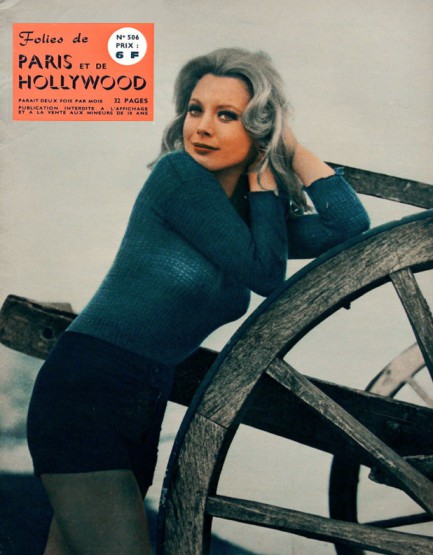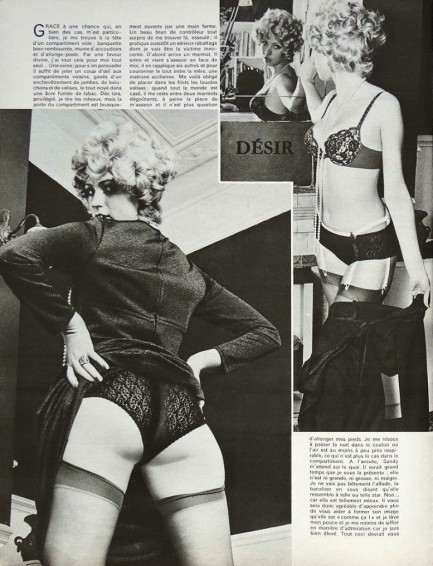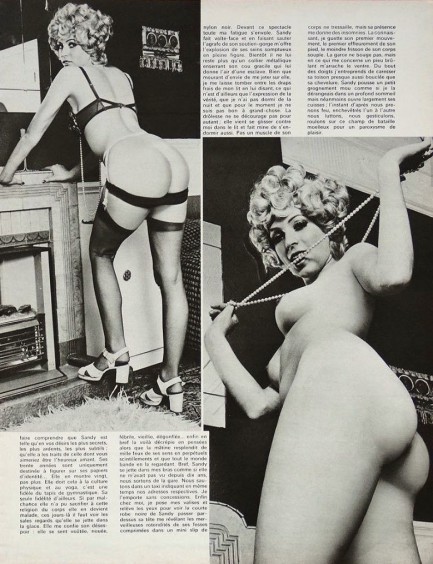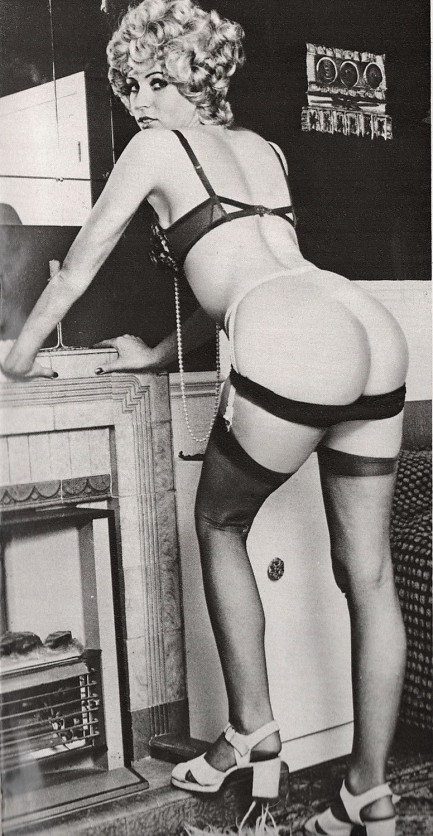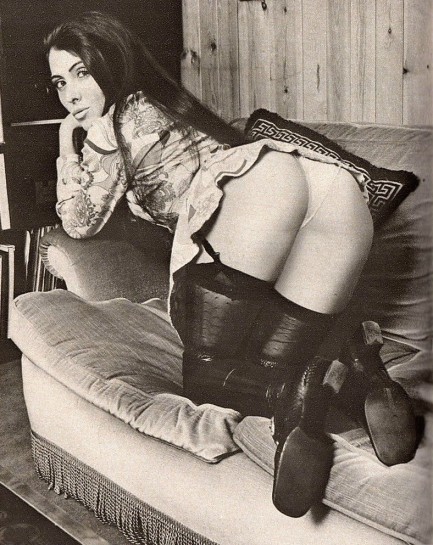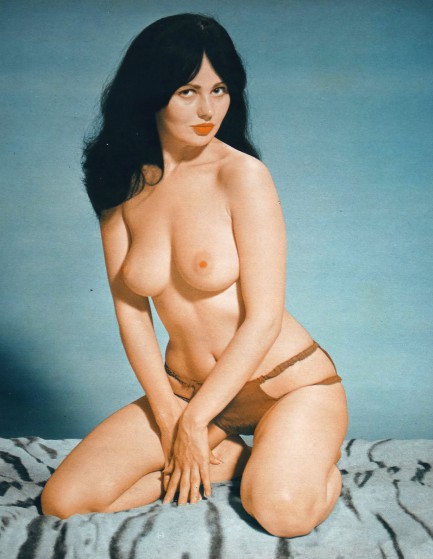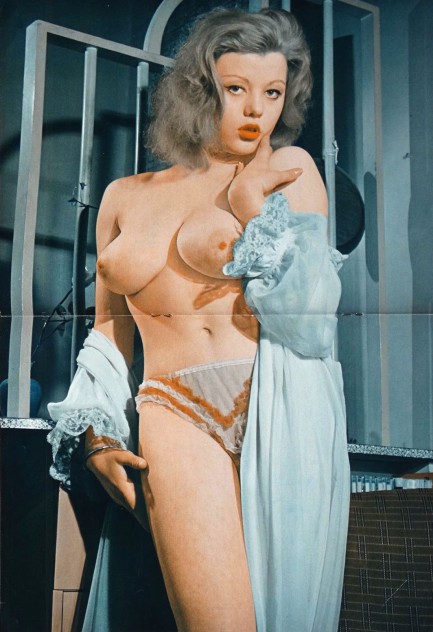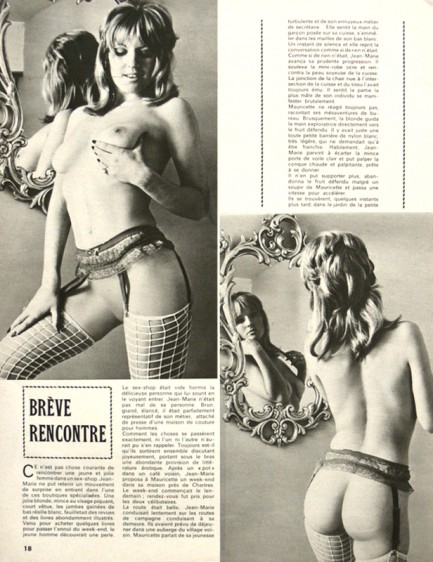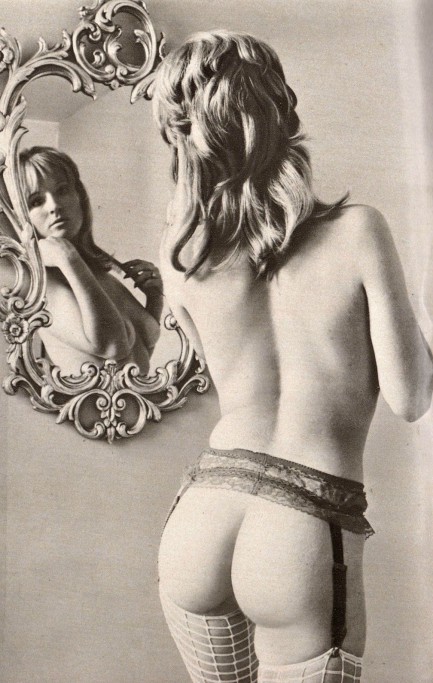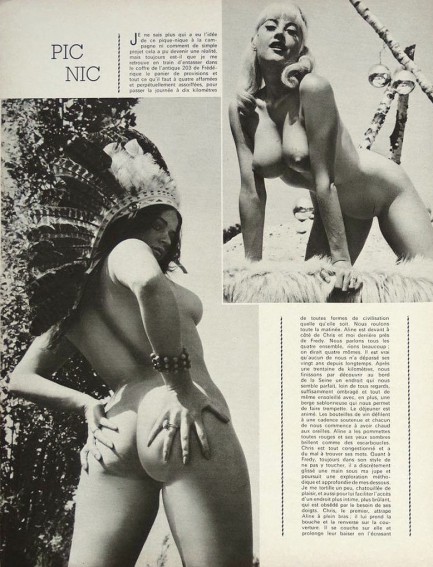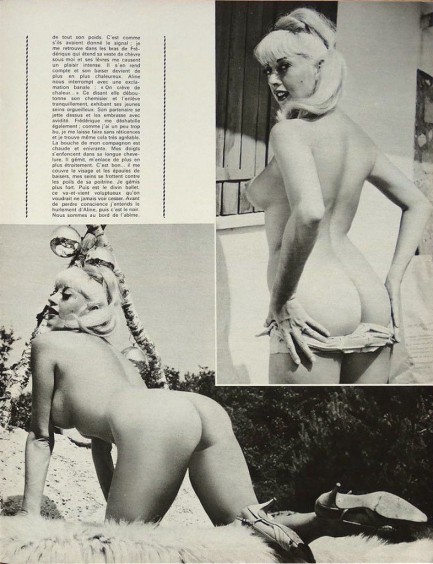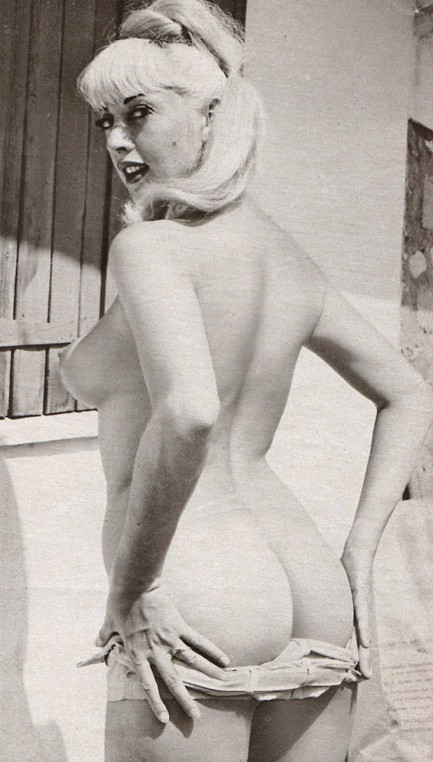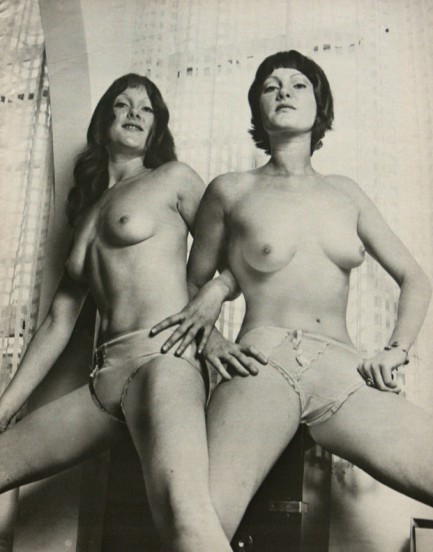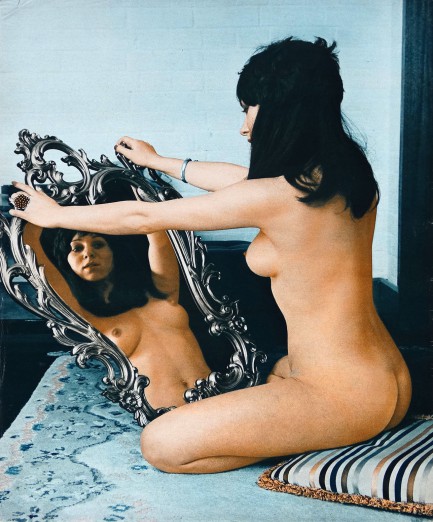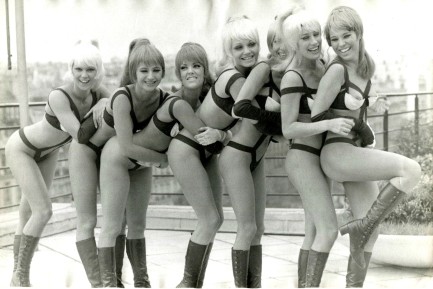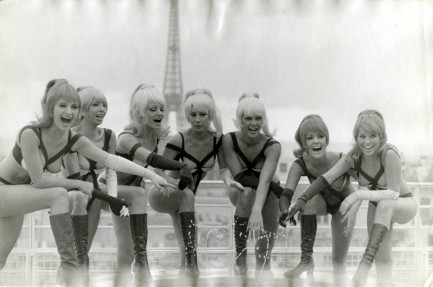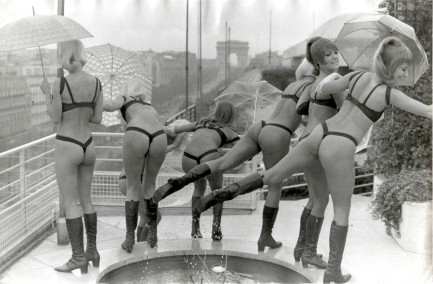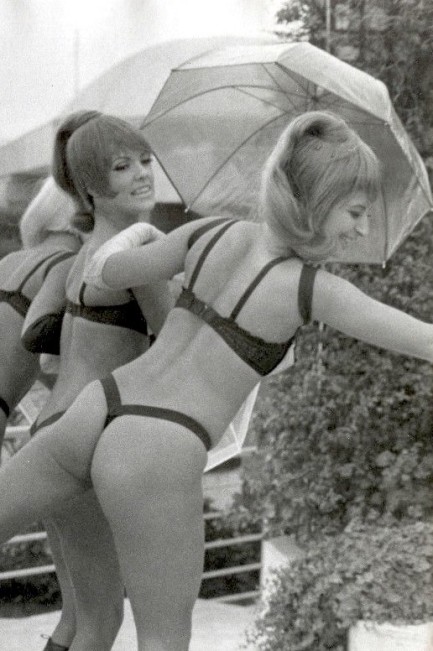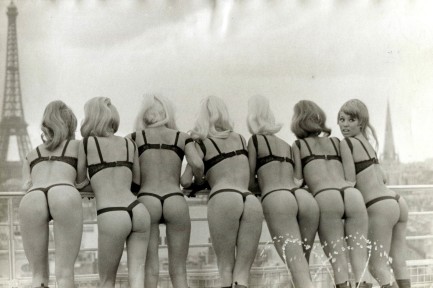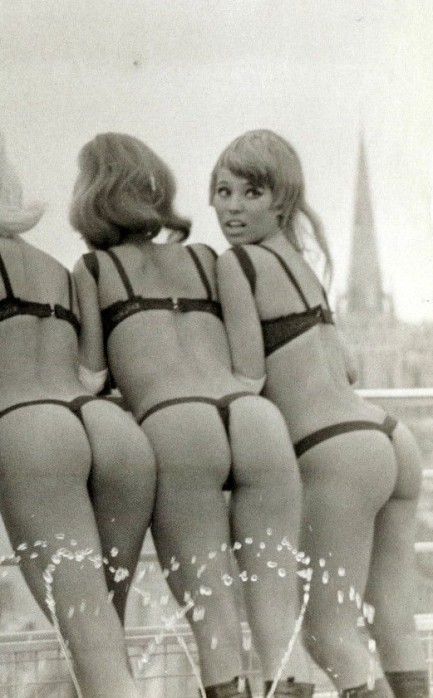 The anatomy and the ecstasy.  
We have a tremendous amount of material on burlesque in Pulp Intl., yet it's been eight years since we put together a full collection of mid-century burlesque dancers, go-go girls, and strippers. That day has arrived again. Above and below you see some of the better shots we've run across of late, featuring the famous and the obscure, the restrained and the explicit, the domestic and the foreign, and the blonde, red, brown, and brunette. Where possible we've identified the performer, such as above—that's Carol Ryva, sometimes known as Carol Riva, Carole von Ryva, Cara Rive, et al, a French dancer who rose to fame during the early 1960s. Other familiar faces you'll see are Lilly Christine, Maria Tuxedo, Gay Dawn, Yvonne Ménard, and Virginia Bell. Occasionally, when we post something that contains nudity, we feel, in this age of new puritanism that we should comment about it. We saw a survey recently indicating that a large percentage of Gen Z'ers think nudity in movies is unnecessary in all circumstances, especially sex scenes. And we're like, really? The wonderful thing that virtually every person does, or which practically everyone wants to do, and which is how nearly all of us came to be here on the planet, is somehow taboo, but the horrible thing that virtually none of us do—kill—must be part of nearly every film, book, and television show? Programming works. If you sell sexual shame unceasingly new generations will absorb it, and believe they've come to their views organically.
The reality is that sex and nudity are freeing. Burlesque and erotic dance are valuable because they take our DNA driven sexual desire and package it as an art form, fit for public consumption and contemplation. Moving one's body rhythmically feels good, and watching those who work so very hard but make look so easy the pushing of their physical limits within the realm of such expression is pleasing to the eye and psyche. That's why we love erotic dance. Our two previous burlesque collections, “Infinite Jest,” and “Dancers Gotta Dance,” are here and here, and we have some notable smaller burlesque forays here, here, and here. But if you want to kill some time for real, instead click the keyword “burlesque” at bottom, then scroll, scroll, scroll. Make sure you pack a lunch. Virginia Bell
Lee Sharon.
Dixie Brandy.
A group shot from the legendary Crazy Horse, Paris.
The incomparable Lilly Christine. We also have a set of photos from one of her performances here, and more links from that point.
 
The Follies Theater at 337 S. Main Street, Los Angeles, 1946.
Tempest Storm.
Gay Dawn.
Yvonne Ménard, and more photos here.
Carol Jane, aka Spider Woman.
  Jackie Miller.
    Debra Paget, who performed one of the most provocative screen dances ever in 1959's De indische grabmal. Debra Paget, who performed one of the most provocative screen dances ever in 1959's De indische grabmal.
 Blaze Starr. We also saw her recently here. Blaze Starr. We also saw her recently here.  
 The French know how to put on a show, and the Japanese know how to put on a poster. 
Here's a fantastic poster we've had sitting around for a while made for the Japanese run of the French film Ah! les belles bacchantes!, which was changed here to Hadaka no megami, or “the naked goddess,” and in English was known as Ah! The Beautiful Priestesses of Bacchus, Peek-a-Boo!, and other titles. Basically it follows a provincial morals cop played by Louis de Funès who decides to take a close look at the local cabaret revue expecting to shut it down, but due to a series of wacky events during the rehearsals he ends up appearing in the show.
This will be the first time this poster has ever been online, but it isn't the first time we've talked about the movie. We wrote about it eight years ago and shared a different, equally rare promo. You'll notice that the Japanese title is different, but the French title in the upper right corner is the same. Ah! les belles bacchantes! is an extremely interesting historical curio, effervescent and sexy, evidencing how much more advanced the French were concering the human body than puritans in the U.S. It premiered in France the autumn of 1954 and reached Japan today in 1955. We also have two other posters in the same beautiful style that you can see here and here.

 Before we go in, I should warn you that Isa might jump out from somewhere. Act surprised. She'll leave you alone after that. 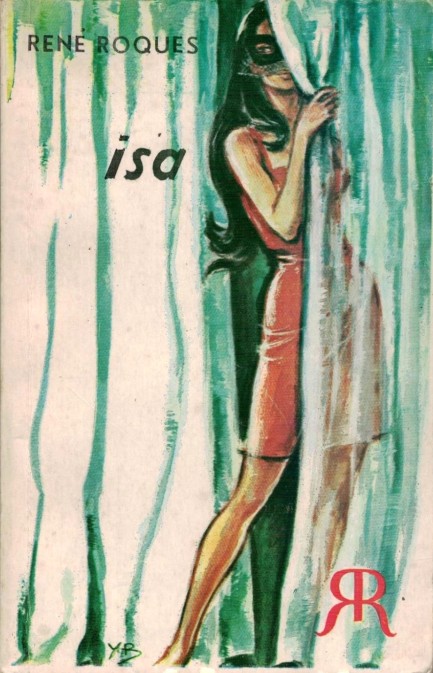
Above: a cover for the 1953 adventure Isa, written by René Roques and published by his Paris-based company Éditions R.R. Their cover art was often by Jef de Wulf, but this one is signed YB. We have no idea who that is, nor have we ever seen his or her work elsewhere, but it's an interesting effort. R.R. produced attractive covers even in collaboration with obscure artists, so some of the credit for their consistency probably goes to the company's art director—René Roques himself. Click his keywords below to see more.
 La Muse de l’existentialisme et Miles. 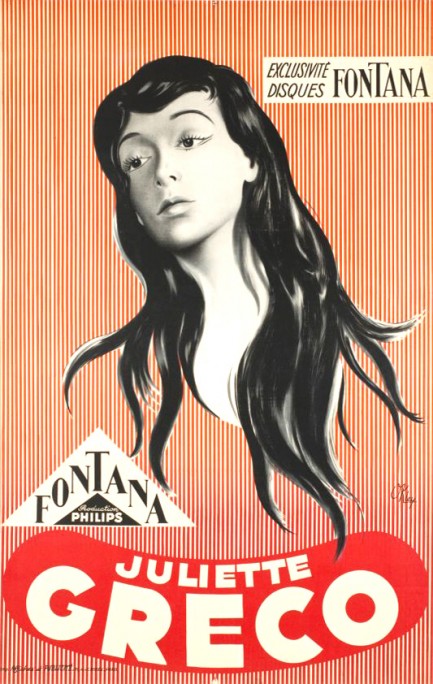
 This striking music brochure promo art for French singer Juliette Gréco and Disques Fontana (a subsidiary of the Dutch label Philips Records) was created by the famous illustrator O’Kley in 1956. The art was reused for record covers, as you see below. This striking music brochure promo art for French singer Juliette Gréco and Disques Fontana (a subsidiary of the Dutch label Philips Records) was created by the famous illustrator O’Kley in 1956. The art was reused for record covers, as you see below.
Gréco, an actress as well as singer, was a fixture in the Saint-Germain-des-Prés area of Paris, and her acquaintanceships with such figures as Jean-Paul Sartre and Maurice Merleau-Ponty earned her the nickname La Muse de l’existentialisme—the existentialists’ muse. She was also, according to Miles Davis, one of the great loves of his life, and the feeling was reciprocated, so that wins major points right there because Miles was the bomb.
Moving on to the art, O’Kley was a pseudonym for Nantes-born Pierre Gilardeau, the man behind some of the most collectable Folies Bergère posters. He also illustrated many book covers and movie posters, and after a long career died in 2007. We’ve seen some good examples of his art, so we’ll try to get back to him a bit later—but we make no guarantees. You can see another Fontana post here.
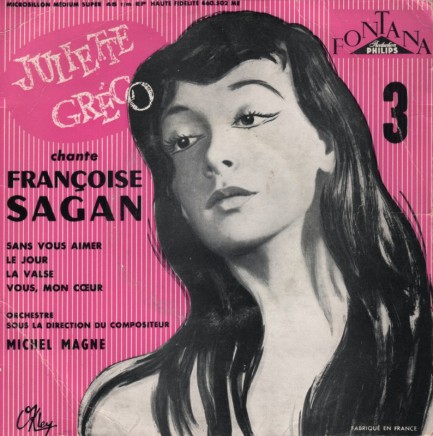 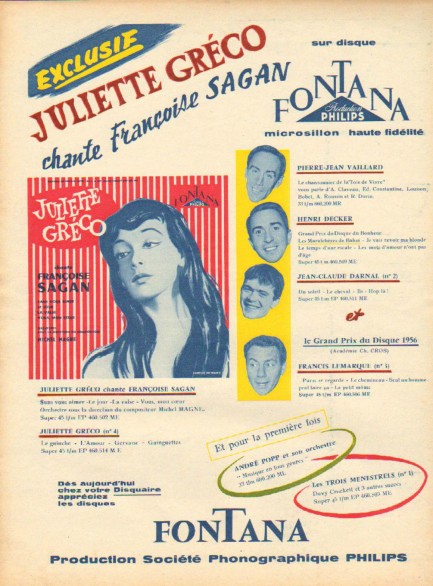
 Welcome to the greatest show on Earth 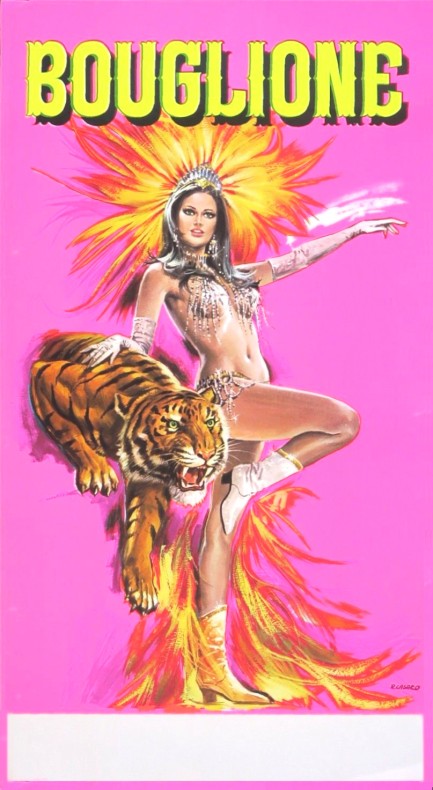
Renato Casaro was a celebrated Italian movie poster artist, but he worked in other media, including album sleeves and portraiture. Above he's created an advertising poster for Cirque d’Hiver Bouglione, a Parisian circus that traces its roots back to 1852, when Charles de Mornay, commonly referred to as Duc de Morny, undertook its creation and named it after his half brother Prince Louis-Napoléon III. When the circus finally opened in 1859 it featured equestrianism, animal acts, and aerial acrobatics from the famed Jules Léotard. After being interrupted by World War I, the business passed over to Gaston Desprez in 1923, and again in 1934 to the Bouglione Brothers, who were Italians who'd made a name for themselves traveling France with a menagerie and wild cat act. The circus was halted during World War II and the occuptation of its buildings by the Nazis, but emerged post-war to continue its growth and fame, known by then as Cirque d’Hiver Bouglione, the name it bears today. Casaro's lovely poster dates from 1970.
 A murder by any other name would kill as dead. 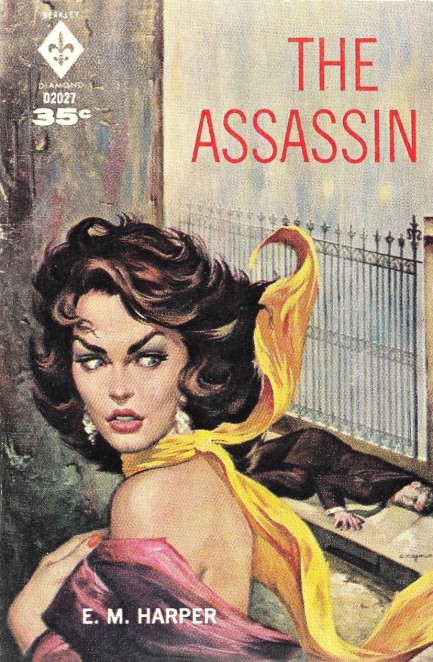
This is a rather pretty cover painted by Charles Copeland for E.M. Harper's 1960 novel The Assassin, the story of Alec Jordan, who's spared the guillotine in an Algerian prison but must repay the shadowy government operatives who freed him by murdering an Arab political figure. We've seen convicts turned into assassins a couple times in vintage literature. What sets this story apart is its many flashbacks to Jordan's youth, from the time he was witness to his moonshiner father's killing by cops, to being sprung from reform school to play high school football (seems someone always wants to put his skills to use), to his various war experiences.
The story begins in Paris, from which Jordan pursues his target to London and Vienna, world weary, haunted by the past, and hounded by the people who are operating him. There's, unsurprisingly, the requisite woman-from-his-past for whom he still has feelings—a beauty named Renée who married an Austrian count while Jordan was hors de combat. Conveniently, she's now a widow, but is reclaiming the past an option for Jordan? To survive but lose your soul, to resist corruption but be killed, to find redemption in love. You've read it before, and though Harper breaks no new ground plotwise, he wrote a contemplative iteration of the story that offers some enjoyment.
 Happiness, anger, and ballistics. 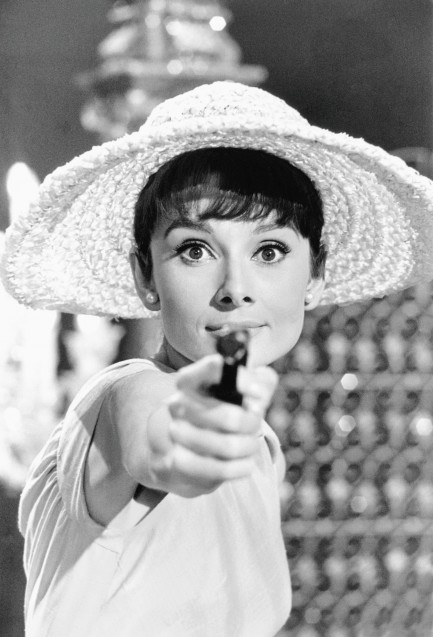 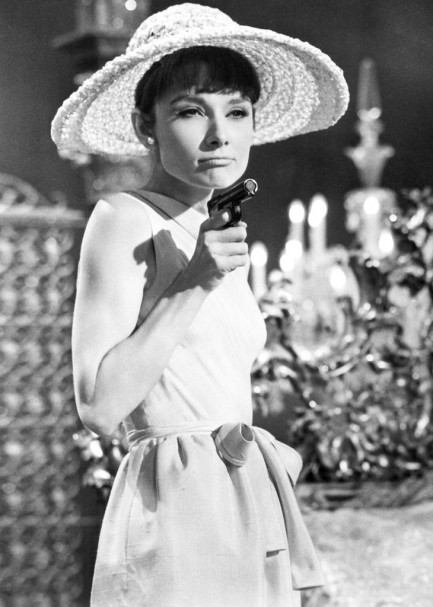
These two promo images of famously thin actress Audrey Hepburn were made for her 1964 film Paris When It Sizzles. It's another movie in her romance/adventure mold, along with Charade, How To Steal a Million, and others. There's a Hollywood commandment: Thou shalt not mess with success. For a while, following that rule made Hepburn one of the biggest stars of all.
 They're willing to hustle, side-hustle, and even hustle on their backs to get what they want. 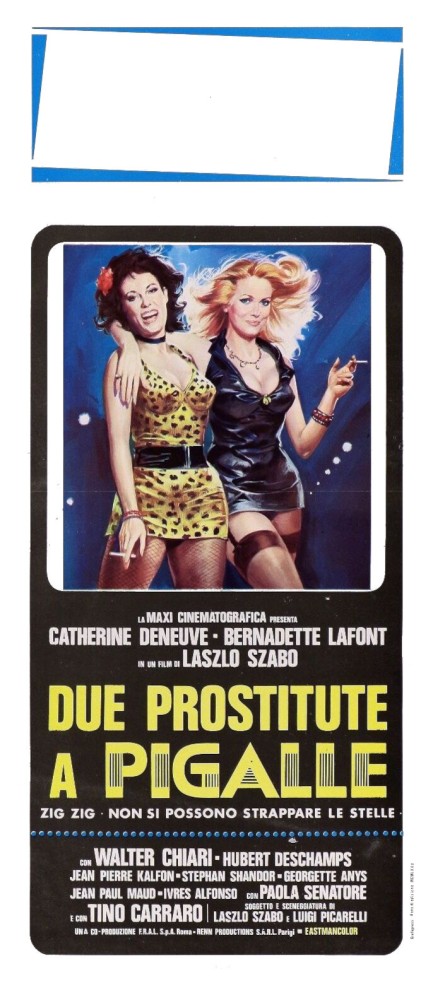
When we stumbled across this Italian poster and saw that it was for a film starring the lovely Catherine Deneuve and her unbeatable hair, we felt a screening was needed. Due prostitute a pigalle is a French/Italian co-production that was originally titled Zig-Zig, with the name changing to Zig-Zag for the U.S. The movie is about two Parisians played by Deneuve and Bernadette Lafont who work as cabaret entertainers, bookies, and prostitutes in order to raise enough money to buy a chalet in the mountains. Their signature song and dance number “Zig Zig” earns them a small measure of fame around Paris, and the dream home seems closer by the day.
However, Deneuve has no idea that Lafont is involved with a gang of cross-dressers who've kidnapped the wife of a prominent politician. When she finds out, she freaks out, and it looks like her friendship with Lafont is cooked and their house will never come to be. The movie has its moments, but jarring shifts of tone from serious to farcical and an insistence upon an ironic and unrealistic ending definitively sink it. Even so, it has Deneuve, and her hair can't be sunk under any circumstances. Due prostitute a pigalle premiered in France in early 1975, and in Italy today the same year.
 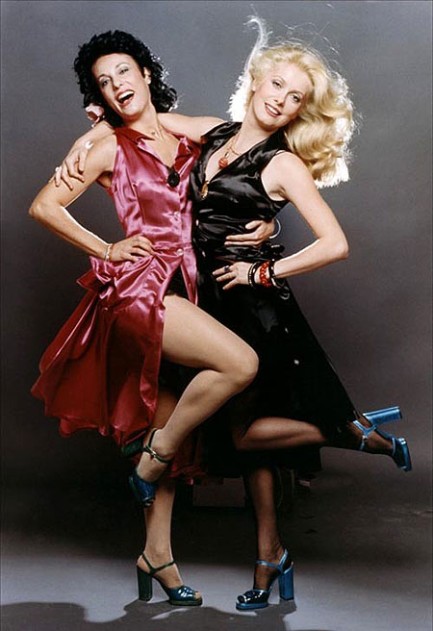 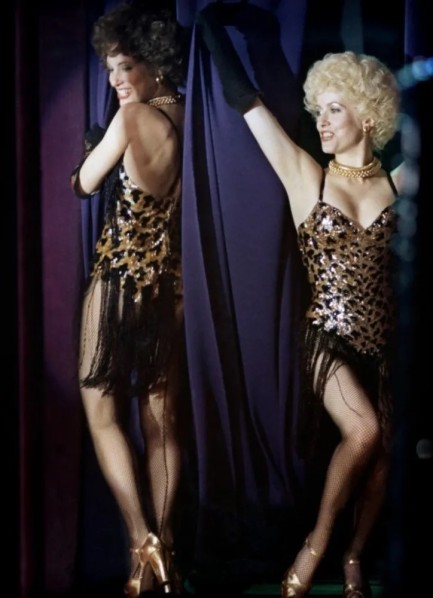 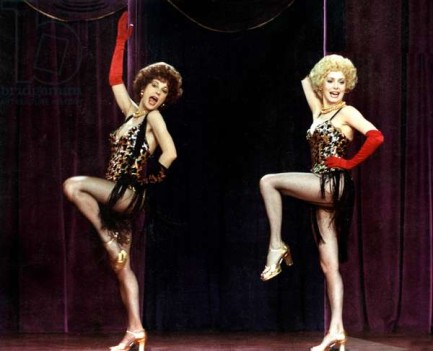 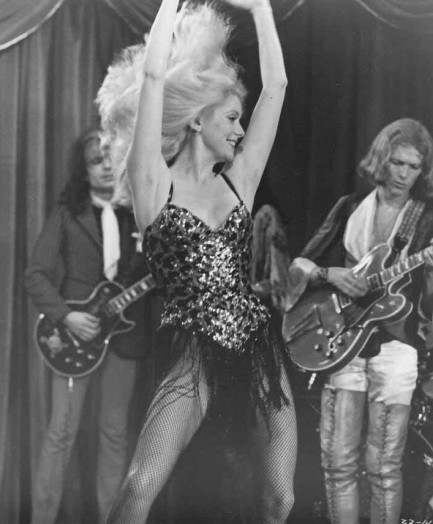 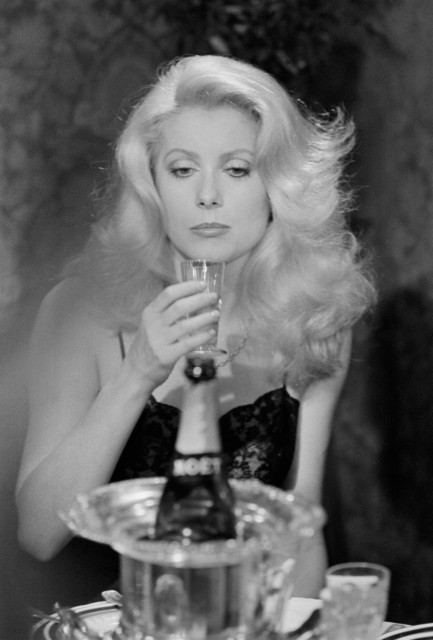  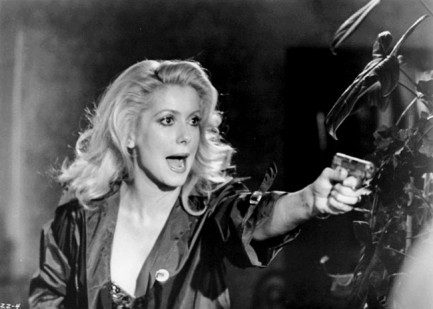

|
 |

The headlines that mattered yesteryear.
2003—Hope Dies
Film legend Bob Hope dies of pneumonia two months after celebrating his 100th birthday. 1945—Churchill Given the Sack
In spite of admiring Winston Churchill as a great wartime leader, Britons elect
Clement Attlee the nation's new prime minister in a sweeping victory for the Labour Party over the Conservatives. 1952—Evita Peron Dies
Eva Duarte de Peron, aka Evita, wife of the president of the Argentine Republic, dies from cancer at age 33. Evita had brought the working classes into a position of political power never witnessed before, but was hated by the nation's powerful military class. She is lain to rest in Milan, Italy in a secret grave under a nun's name, but is eventually returned to Argentina for reburial beside her husband in 1974. 1943—Mussolini Calls It Quits
Italian dictator Benito Mussolini steps down as head of the armed forces and the government. It soon becomes clear that Il Duce did not relinquish power voluntarily, but was forced to resign after former Fascist colleagues turned against him. He is later installed by Germany as leader of the Italian Social Republic in the north of the country, but is killed by partisans in 1945.
|

|
|

It's easy. We have an uploader that makes it a snap. Use it to submit your art, text, header, and subhead. Your post can be funny, serious, or anything in between, as long as it's vintage pulp. You'll get a byline and experience the fleeting pride of free authorship. We'll edit your post for typos, but the rest is up to you. Click here to give us your best shot.

|
|





















































 This striking music brochure promo art for French singer Juliette Gréco and Disques Fontana (a subsidiary of the Dutch label Philips Records) was created by the famous illustrator O’Kley in 1956. The art was reused for record covers, as you see below.
This striking music brochure promo art for French singer Juliette Gréco and Disques Fontana (a subsidiary of the Dutch label Philips Records) was created by the famous illustrator O’Kley in 1956. The art was reused for record covers, as you see below.


